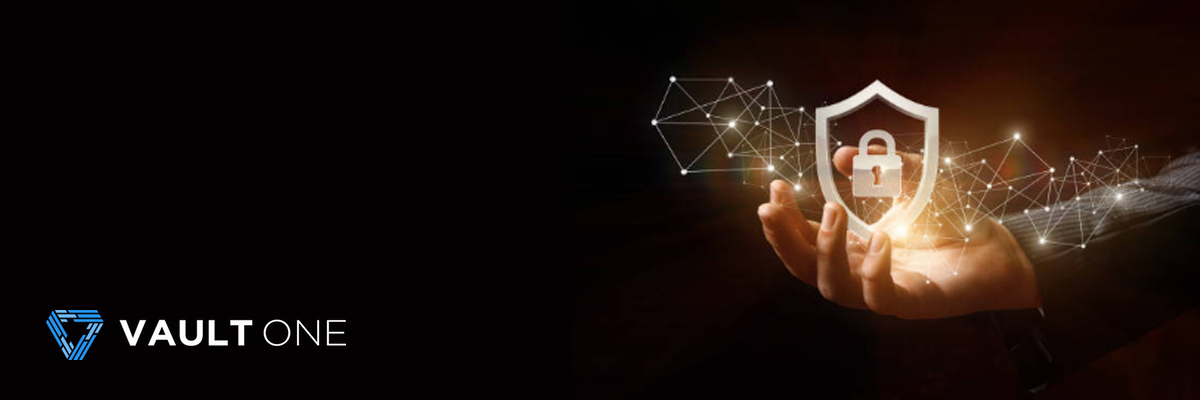Zero Trust Security: A Comprehensive Guide to Zero Trust Implementation and best practices of network security
- Updated at
- By Sabrina Zapora
- Passwords, Secure Access, Security

In the ever-evolving landscape of cybersecurity, organizations face increasingly sophisticated threats to their networks and data. To combat these challenges, it is imperative for companies to prioritize the secure protection of their systems. One approach that has gained significant attention is Zero Trust Architecture. No user or device should be automatically trusted. Instead, every interaction should be verified by security policies and monitored by the security team. This post will delve into the importance of implementing Zero Trust in today’s business landscape and how it can be utilized to bolster security strategies and safeguard valuable assets.
Understanding the Concept of Zero Trust in Network Security
In recent years, Zero Trust has been gaining a lot of attention as an effective security concept. This method does not assume that everything in the network can be trusted without question. Instead, it requires rigorous authentication before trusting anything. This ensures networks are better protected against malicious users or unauthorized access by needing constant verification of all resources and people using them. In short, adopting Zero Trust can significantly enhance your overall safety levels – why take any chances?
The concept here is to make it an extremely difficult task for attackers to gain access and move around a system without being detected. Basically, Zero Trust involves designing the network in such a way that each area or part of it can only be accessed by authenticated users or devices – so even if they get hold of password details, they don’t have free run over the whole system. This micro-segmentation helps protect against malicious actors who might try to hide their activities from detection while moving laterally through systems. It begs the question: How do you ensure your security infrastructure provides sufficient protection?
To ensure sensitive data is secured from prying eyes or malicious actors, organizations must have in place a multi-faceted security approach. This means incorporating identity-based authentication methods such as Multi-Factor Authentication (MFA), Single Sign On (SSO) technologies and User Behavior Analytics (UBA). Such measures will validate access requests before allowing them into the organization’s systems, protecting your information from any unauthorized use.
To prevent unethical behavior within an organization, technical solutions are insufficient. Policies must be implemented to determine access rights to resources and guidelines for their use within the network environment. It’s essential these rules are strictly enforced so any attempts at breaching policy send out warning signals immediately alerting IT staff or other security personnel of possible suspicious activity taking place. Combine technical solutions, strong policy enforcement, and constant threat monitoring to create an atmosphere where only authorized users can access confidential material. This greatly reduces the risk of exposure or misuse.
Importance and Benefits of Implementing Zero Trust Security Model
Zero Trust is a security model with the idea of never trusting and always verifying. It can help protect organizations from cyber threats, helping them to better identify malicious activity, analyze it and respond accordingly. This approach requires authentication for every user or device in order to be granted access into an organization’s network as well as monitoring all data flows within that environment looking out for suspicious activities or changes in behavior. Put simply, zero trust makes sure each individual request is verified before gaining any sort of access – this keeps outsiders away but also increases internal security so nothing untoward gets through without being noticed.
The concept of zero trust suggests that no one should be given unrestricted access to an organization’s networks or resources. Instead, users must demonstrate their identity and permission before being allowed entry. This facilitates the certainty that only those with necessary credentials are provided entrance to sensitive information or systems within a business’ network environment. In addition, companies ought to enforce strict surveillance of user activities including analytics for recognizing peculiar behavior which may indicate either a security breach attempt or malicious action from inside outwards.
Implementing zero trust methodology is a great way for organizations to reduce their attack surface. To improve network security, limit privileged user accounts and control remote access authentication. This helps prevent unauthorized access without causing inconvenience to legitimate users who need network access for work, like connecting remotely from home or when traveling. But how does this process really help make these organizations more secure? What is the cost in terms of effort and money for companies to establish an effective zero trust policy system to protect them from cyber threats?
What is Zero Trust Security Model? It’s a highly advanced security approach that gives organizations greater visibility into user activity, enabling them to take quick action against malicious activities. This model reduces the risk of internal threats such as account takeover or insider sabotage by allowing for detailed control based on the “need-to-know” principle, while maintaining a smooth experience for end-users.’ principle. The best part about it is its real time monitoring feedback loop process which quickly detects any unauthorized attempts and takes immediate measures such as blocking suspect IPs etc., thus reducing chances of further damage compared to traditional models where static rulesets are configured manually without giving timely results when suspicious things happen. In other words, bad actors have enough time before something gets detected, leaving more room for breach until it’s too late!
Role of Identity Management in Cybersecurity with Zero Trust
Identity Management is crucial for robust cybersecurity in a Zero Trust environment. It ensures that only validated users have access to systems and associated resources, safeguarding sensitive corporate and customer information.
Implementing Identity Management in a Zero Trust environment offers multiple benefits. It uses authentication protocols like multifactor authentication, single sign-on (SSO), and biometrics to prevent unauthorized access and provides visibility into user activity. This allows businesses to monitor and prevent unauthorized access to sensitive material.
An effective identity management system enables organizations to quickly detect suspicious activities and take corrective actions, mitigating the risks of malicious attacks or insider threats. It also helps enterprises comply with data privacy regulations like GDPR or CCPA. It becomes obvious why implementing a reliable identity management solution is crucial if you want your organization to safely thrive in the modern threat landscape!
The Connection between Cloud Security and Zero Trust Model
The idea of Zero Trust is really taking off in the world of cloud security. And it’s a pretty easy concept to grasp: never trust, always verify. Instead of using perimeter-based network protection strategies, this cybersecurity model requires authentication for every user and device before granting them access to data or apps. This applies to both internal and external users. The question is, how do you make sure that this verification happens without fail?
Cloud computing has made data storage and access simpler than ever before, however it also brings new security dangers which must be taken care of with an effective safety plan. Clearly, cloud settings necessitate a different approach to secure the data since these are more exposed to malicious behavior owing to their communal nature and insufficiency of physical fences among users and resources. Therefore, for organizations using clouds it is crucial that they make sure their information is well-guarded from any unauthorized intrusions.
Zero Trust is a model that helps protect important assets in the cloud. Instead of relying on traditional network perimeters, it focuses on verifying identity to prevent malicious attacks. This strategy requires strong authentication methods like multifactor authentication (MFA). MFA verifies user legitimacy by using tools such as passwords, biometrics, or tokens before allowing access. Furthermore, this approach necessitates continuous observation, so any suspicious actions can be quickly identified and managed without weakening overall security measures. Merging the Zero Trust method with encryption protocols allows organizations to effectively secure their cloud environment while following regulations like HIPAA or GDPR. These regulations apply to businesses of all sizes and industries.
Overcoming Challenges in Adopting a Zero Trust Model Approach
Organizations worldwide are adopting Zero Trust to secure their networks and data. However, achieving this goal can be complex. To overcome this challenge, organizations need a comprehensive understanding of the technology and a risk-focused implementation plan.
Before implementing a Zero Trust strategy, organizations must determine the necessary components for success. This includes selecting appropriate technologies such as identity and access management (IAM), micro-segmentation, multifactor authentication (MFA), and encryption. Integration of these components is crucial to ensure effective collaboration. Additionally, secure access should be provided to users regardless of their device or location without compromising security or privacy. Strong authentication methods like MFA and access restrictions based on user roles, geography, and device type are essential.
Continuous monitoring of user activities is vital to detect potential threats. Users should also be educated on system functionality and adhere to security protocols when accessing from external locations. Regular training sessions are necessary to keep employees informed about changes in the Zero Trust strategy and safety policies.
In summary, Zero Trust is an essential element of network security and cyber defense plans for any company. It protects cloud services, identity management systems, and sensitive data from cyberattacks. Implementing Zero Trust reduces the risk of security breaches, as each connection requires authentication, minimizing the chances of unauthorized access. Overall, Zero Trust enhances security by implementing rigorous authentication protocols for every connection, reducing reliance on network perimeter trust.
The vital role of a trusted Zero Trust PAM Solution Provider
A trusted Zero Trust Privileged Access Management (PAM) solution provider plays a vital role in enhancing network security. With a Zero Trust approach, organizations can no longer rely on traditional perimeter-based security models. Instead, they must adopt a proactive and granular approach to managing privileged access.
A trusted PAM solution provider offers network visibility capabilities, allowing organizations to have a comprehensive view of all privileged accounts and activities across the network. This visibility enables them to identify any potential security risks or threats in real time.
For example, VaultOne’s Zero Trust Privileged Access Management (PAM) solution offers a wide range of benefits to organizations looking to strengthen their security posture. By implementing VaultOne, companies can have total control and visibility over who accesses their data, systems, applications, and infrastructure. This comprehensive control ensures that only authorized individuals can access critical resources, effectively preventing cyberattacks and data breaches.
With VaultOne, companies can securely manage user access, including remote access, and maintain strict control over resources, passwords, and credentials. By doing so, they can effectively mitigate the risk of data breaches and cyberattacks. Additionally, VaultOne enables companies to achieve compliance with laws and standards, ensuring that they meet regulatory requirements. With its robust features and comprehensive approach to security, VaultOne’s Zero Trust PAM solution empowers organizations to protect their valuable assets and safeguard their business operations.
Additionally, a trusted provider can help implement robust authentication and authorization mechanisms, ensuring that only authorized individuals have access to privileged accounts and resources. They also offer continuous monitoring and auditing capabilities, providing organizations with detailed visibility into all privileged access activities. A reliable Zero Trust PAM provider helps organizations enhance security by offering network visibility, enforcing access controls, and enabling monitoring and auditing.
VaultOne prevents these data breaches by protecting the user and their access. VaultOne also tracks and records access sessions for forensic analysis, auditing, and identifying breaches.



